 Return to Home
Return to Home
These pages highlight the various books you will find useful for
the Computer Organisation (SC202) course. Most of them are readily
available in NTU Library 1. I have also included some comments
regarding their coverage, style, etc., which of course is strictly
my opinion. I have kept this list to books dealing mainly with
the Motorola 68000 microprocessor. You might find books detailing
the Intel microprocessor (or even a generic processor) to be just
as useful in teaching general computer organisation concepts.
 Return to Home
Return to Home
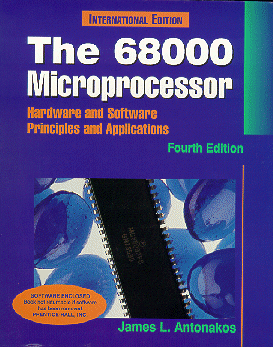
Publisher: Prentice-Hall, 4th Edition, 1999.
NTU Library Class No. : QA76.73.A8A634 (There should be several copies in the Reserve Room).
Comments: A very comprehensive book which gives good coverage of all topics which will be covered in the CE107 course. The software section of the book comes with plenty of useful short examples to help you appreciate how the various 68000 instructions function. Enough assembly programming examples are also available to give you some practice in writing short assembly programs to do sorting, handle data structures, etc. Memory address decoders and the Parallel Interface/Timer (PI/T) is also well covered. The book also comes with a diskette containing a 68000 cross-assembler (ASM68K) and a 68000 emulator(EMU68K). These two software should allow you to write and execute simple 68000 assembly programs such as those required of you in your tutorials and examinations.
Overall, the strength of Antonakos is in the many short and strategically
placed worked-through examples. Both in the software and hardware
aspects of the 68000 microprocessor system. If you want to buy
only one book for the CE107 course, this would be a good choice.
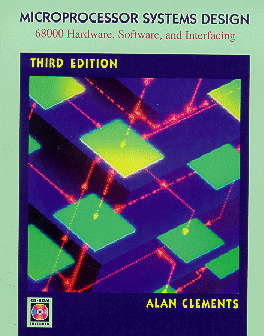
Publisher: PWS Publishing Company, 3rd Edition, 1997.
NTU Library Class No. : QA76.8.M6895.C626 (Found in the Reserve Room - about 5 copies)
Comments: Clements's Microprocessor Systems Design was
last semester's recommended book for CE202 (Microprocessor Systems
Design). It is a good book but may be a little heavy going for
the CE107 course. The hardware aspects of CE107 is well covered
by Clements. However, coverage of 68000 assembly programming is
weak and program examples are lacking. A good buy if you intend
to buy only one book for both CE107 and CE202, but be prepared
to supplement the early part of the CE107 course with books such
as James L. Antonakos or Alan Clements's other book written specifically
for 68000 assembly programming (i.e. 68000 Family Assembly Language
- NTU Library 1, Class No. QA76.8.M67C626, about 3-4 copies in
the Reserve Room).
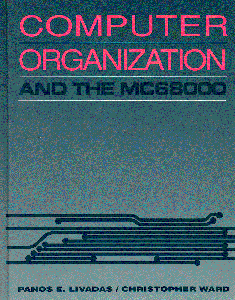
Publisher: Prentice Hall, 1993.
NTU Library Class No. : QA76.9.C643.L784 (Found in the Reserve Room - about 5 copies)
Comments: Lividas is a book that straddles both the CE102
and CE107 course. Good coverage of the prerequisites such as digital
logic, number system and memory organisation. The book also contain
a good coverage of the SIM68 68000 emulator, which behaves very
similarly to the ECB68000 used in the CE107 laboratories. Most
students in the past found the style of writing not very much
to their liking. Additionally, the hardware aspects of the course
is also lacking, especially memory address decoding techniques.
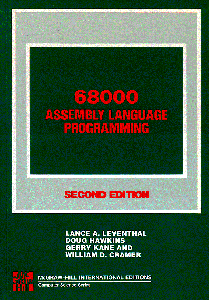
Publisher: McGraw-Hill, 2nd Edition, 1986.
NTU Library Class No. : QA76.8.M6895.A844 (about two copies in the Reserve Room & several copies of the older version by Gerry Kane)
Comments: Lance Leventhal's book is a good reference for
68000 assembly programming. Plenty of programming examples and
also good coverage of techniques for writing structured and modular
assembly programs.
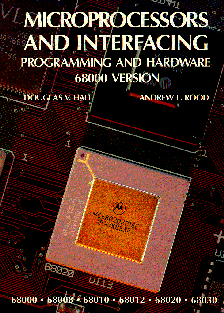
Publisher: Glencoe Division, Macmillian/MaGraw-Hill, 1992.
NTU Library Class No. : QA76.6.H175 (four copies in the Reserve Room)
Comments: Hall provides a reasonable coverage of 68000
assembly programming but its strength lies in the many examples
of interfacing circuitries which could be used to interface the
68000 microprocessor to the outside world. Plenty of application
examples of microprocessor interfacing. A useful book if you want
to built circuits to get the 68000 to do something more useful
besides teaching you 68000 assembly programming. Good reference
for CE107 topic like I/O structure and design.
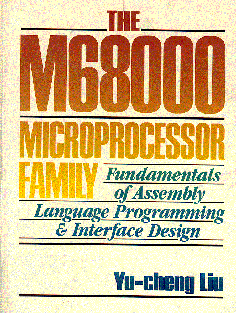
Publisher: Prentice-Hall, 1991.
NTU Library Class No. : QA76.8.M6895.L783 (Found in the Reserve Room - about 5 copies)
Comments: Liu's book also provides a comprehensive coverage
of all the topics covered in CE107. However, unlike Antonakos,
it lacks examples. Definitely a good reference to supplement topics
which you have difficulty understanding either during lecture
or reading Antonakos. Liu has a section (section 4-2 MC68000 Educational
Computer Board) which describes the 68000 microcomputer system
which you will use during the CE107 laboratories. Reading this
section may help you prepare for the first couple of CE107 experiments.
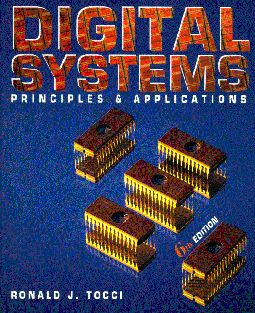
Publisher: Prentice Hall, 6th Edition, 1995.
NTU Library Class No.: TK7868.D5T631 (About four copies in the Reserve Room)
Comments: Most of you should have this book as it was your
recommended text for CE102. It covers most of the prerequisites
you need for the CE107 course. Contains a good comprehensive glossary
of computer jargon which you may encounter in the CE107 course.
The chapter on Memory Devices (chapter 11) will be useful in the
later part of the course which covers the design of memory systems
for microprocessors. Tocci also provides good background reading
for binary and hexadecimal arithmetic.
 Return to Home
Return to Home